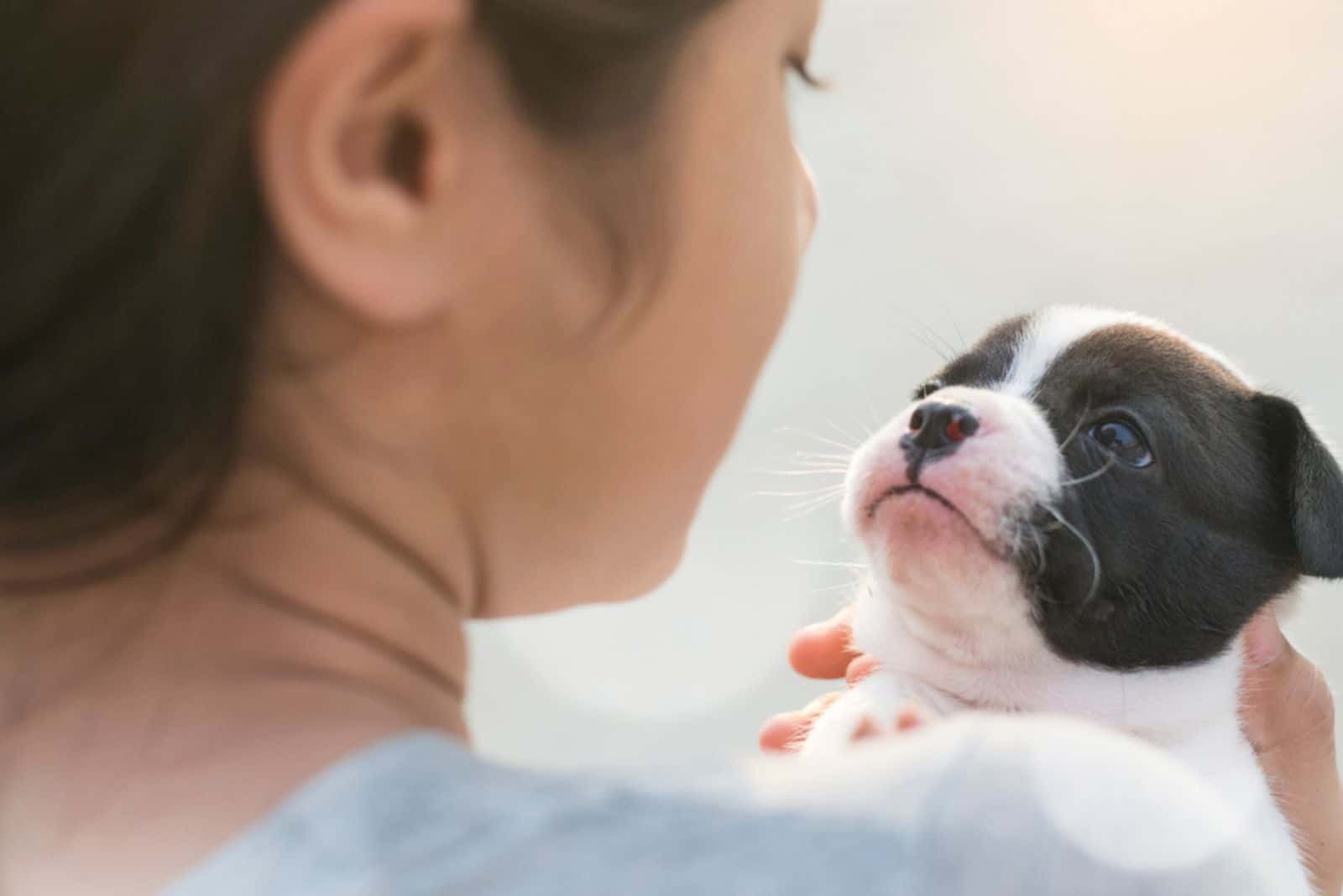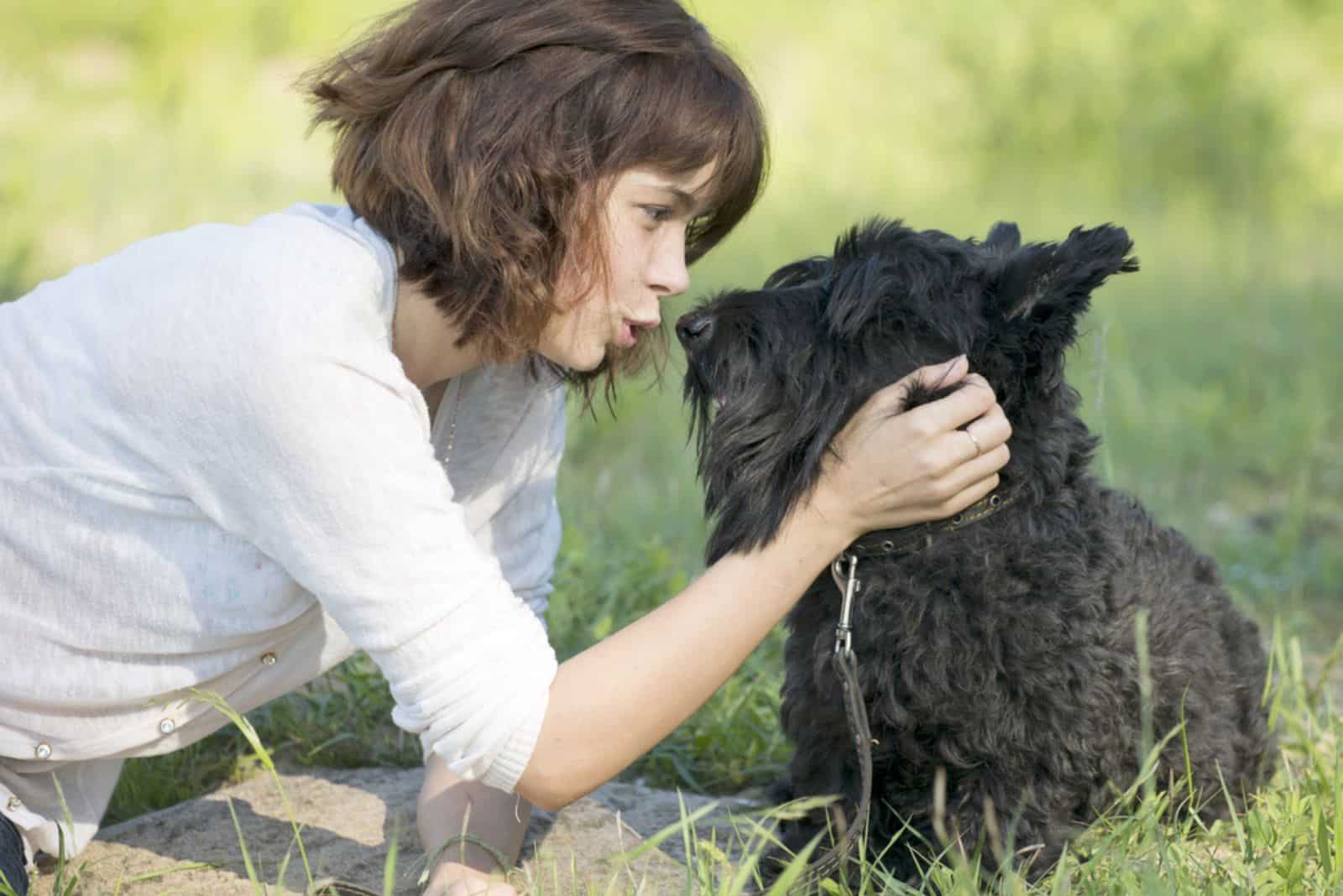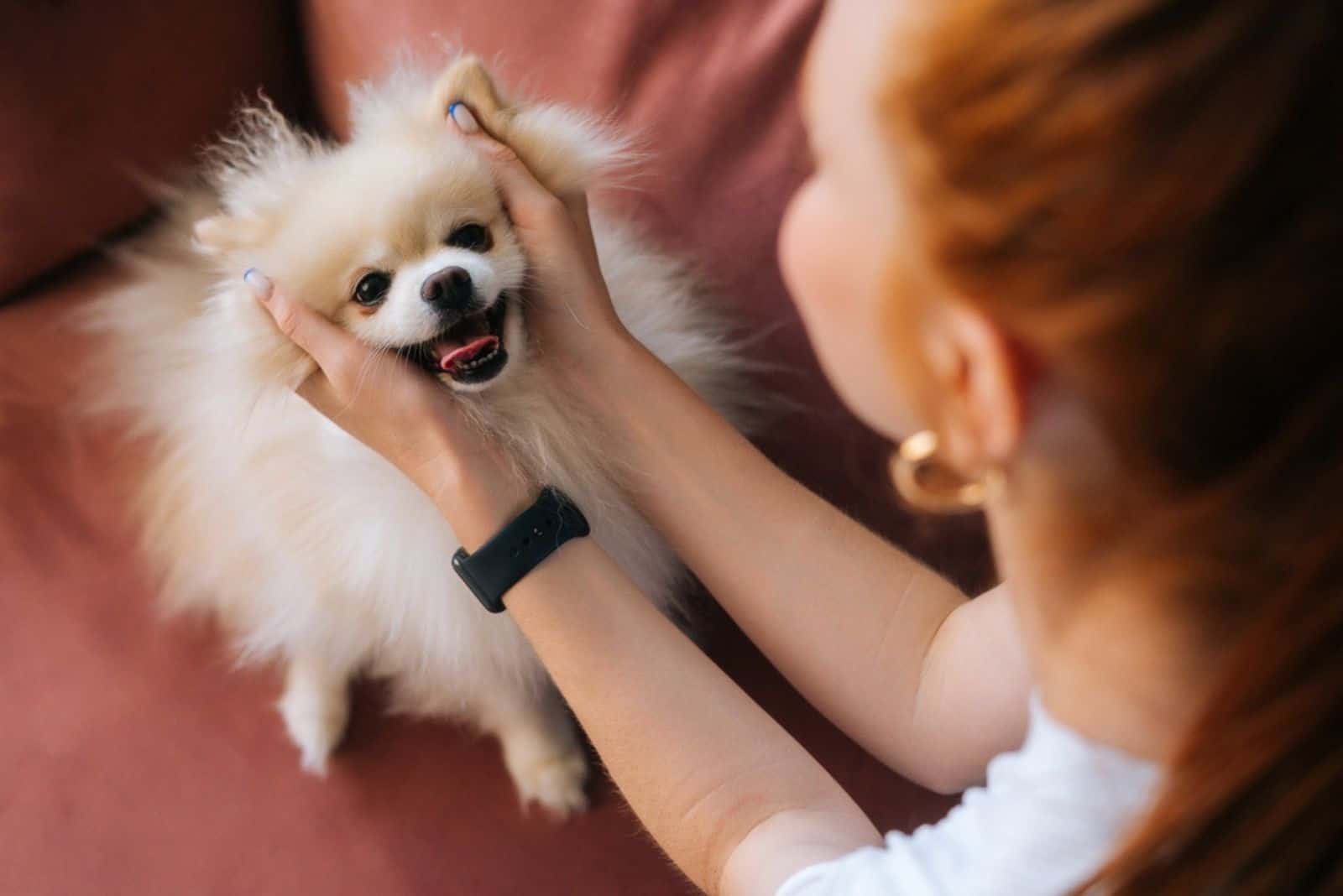Humans like talking to dogs, for sure. Does the enthusiasm go the other way? Do dogs like when you talk to them? Some research has shown that human utterances do produce a reaction in dogs, but is it positive or negative?
Most of the time, we cannot contain our urge to think of dogs as babies, so in the grand scheme of things, nothing is going to change by reading this article. However, it is still a very interesting topic that might help you change your approach if you are not seeing the desired results.
Speaking to a dog is predominantly something that makes us humans feel better, and exploring how they feel about has the potential to change the way you address your dog. Consider this short read an ode to dog domestication.
Voice Pitch And Infantilization Work For A Time

Although men and women both like to baby-talk to their dogs, women have higher pitched voices by nature, and adding that additional few sharp tones while talking to your dog might tip the scales in your favor.
Yes, pitch is important, but the main determining factor of whether a dog will react to your talking voice is their age. Older dogs seem to be baffled by our foolishness when baby-talking, and in most cases ignore whatever we have to say.
The same was not true for puppies. The higher pitched voice most women and men used in a study made a big difference for younger dogs, especially puppies, while older dogs seemed to understand the voice was played over speakers and without a human presence.
Almost identical were the results of the same test with a normal speaking voice. Puppies seemed to be attracted to the voice, regardless of human presence or not. They even tried to entice the speaker to play by bowing in front of it.
Older dogs’ indifference to sounds produced by a speaker, versus a human, show that dogs are capable of distinguishing when a person speaks by associating scent and visual cues with the voice. Even the smartest dog breeds in the world exhibit the same behavior.
The cuter the puppy, the higher our voice pitch when talking to them. This simple evolutionary trait seems to have aided dog domestication and the way they integrated with our living habits to a high degree.
Talking to adult dogs in any pitch or type of talk probably will not yield any particular results, but it can depend on the breed or individual dog within it. A Mastiff might be completely indifferent, while a Labrador retriever’s reaction might be absolute joy and wiggles.
The Actual Use Of Baby-Talk In A Dog’s Life

Recently, we’ve published an article dealing with how smart German shepherds really are, and we have found that they fare pretty well in the dog intellectual world. The research was conducted by Stanley Coren, PhD, at the University of British Columbia, and it touched on dog intelligence.
He deduced that adult dogs are as intelligent as a two-year-old human, in terms of mental ability. This includes their problem-solving capacity, working intelligence, and obedience intelligence.
With a lexicon of over one hundred fifty words in their brain, dogs are equipped to understand most, if not all, things we try to tell them. According to Coren, they are also quite mischievous, looking for opportunities to “act” to get what they want.
Baby-talk has the same purpose for puppies and babies, in that it connects utterances with specific actions or objects. Infantilized speech makes us humans talk slower, more clearly, and in a repetitive manner. This way, it is easier to understand exactly what is being said.
A two-year-old’s understanding of words is pretty high, so dogs have no trouble knowing what different commands mean. It is crucial to understand that not all breeds are equally intelligent, or interested in understanding the meaning of words, so your dog’s average IQ may vary.
Ultimately, the instinctive use of baby-talk with dogs of all ages can be described as a technique used by humans to engage with our non-verbal collocutor on a deeper level. Even hand gestures or other types of signaling with our body can be understood easily by dogs.
To further enhance their understanding ability, canine brains are able to count up to four or five, so trying to trick them with three treats instead of the usual five might tarnish your reputation as a good human.
Are There Downsides To It?

As far as science can tell, there are no negative effects of baby-talk on dogs. However, using it constantly does promote infantilization of dogs, which carries some risks that can do damage in the long run.
One of the downsides is our perception of dogs. Seeing them, and acting towards them, as small children is definitely a habit that can cause major behavioral problems. Despite their intelligence comparable to a two-year-old’s, dogs are animals.
Treating Your Dog Like A Child Has Consequences
But if you wish to stay within the comparison of dogs and two-year-olds, I can explain how bad infantilization can be. A small child has no “big picture” goal in life. It is all about getting what it wants, and most of the time, it has no clue what that is.
Animals are a little different in their needs in the sense that they are mostly looking for food or playtime. Baby-talking to puppies is not the end of the world, but continuing with the practice with an adult dog gets you unwanted behavior across the board.
Dogs require structure and leadership qualities from their owners, and treating a hundred pound German shepherd, for example, like a child only signals to the dog that you are incapable to do what is required.
An overprotective dog can be hard to train, which means there will be aggressive and possessive behavior, disobedience, and even separation anxiety when you are not there.
Us seeing dogs as children makes for a whole world of trouble in other aspects, too. Many owners have large dog breeds that are cuddly and sweet with the family, but aggressive towards strangers.
That comes from the fact that your dog is in a fearful or anxious state of mind. Perceiving an animal that can kill as a harmless child makes for a big mistake. A skewed image of what you see at home often translates into bite injuries suffered by strangers.
For smaller dogs who are, by and large, more aggressive by nature than large dogs, the problem escalates to completely different heights. Unfortunately, our image of them as cute little babies even in adulthood prevents us from seeing the primal nature of the canine.
There Is A More Efficient Way To Talk To Your Dog

It does not even involve the use of your tongue. As a matter of fact, you can produce no sound and have your dog understand you better. Instead of using verbal language to some degree of success, why not use the dog’s language.
Yes, I am talking about body language. We unconsciously use it every day anyway, so why not do it consciously? Humans are not that great at reading body language, but I know from experience that practicing it will make you a better owner for your dog.
Learn to read tail positions, interpret ear movement, and pay close attention to how dogs interact with each other to have a clearer image of what your dog is trying to tell you or vice versa.
Your posture and demeanor also play a massive role in setting an example for your dog on how to feel and act. If you are feeling down, your dog will try to take over the reins, but if you are feeling confident, your canine will gladly follow your lead.
Keep these things in mind and try applying them. I guarantee you will see results in a matter of days. A confident and reliable owner makes for a confident and reliable dog.
Making Sense Of It
While science has made some attempts to answer the “Do dogs like when you talk to them” question, we still do not have a clear understanding of how dogs perceive our single-sided verbal communication.
They certainly try and relatively successfully interpret this type of communication, but whether they like the way of conversing or the things associated with giving it attention does, it remains unanswered.
It would be a far-fetched conclusion to say they hate it, but the fact that older dogs seem to ignore non-human baby-talk shows that the speech and pitch are irrelevant as a whole. What matters is the human presence.
